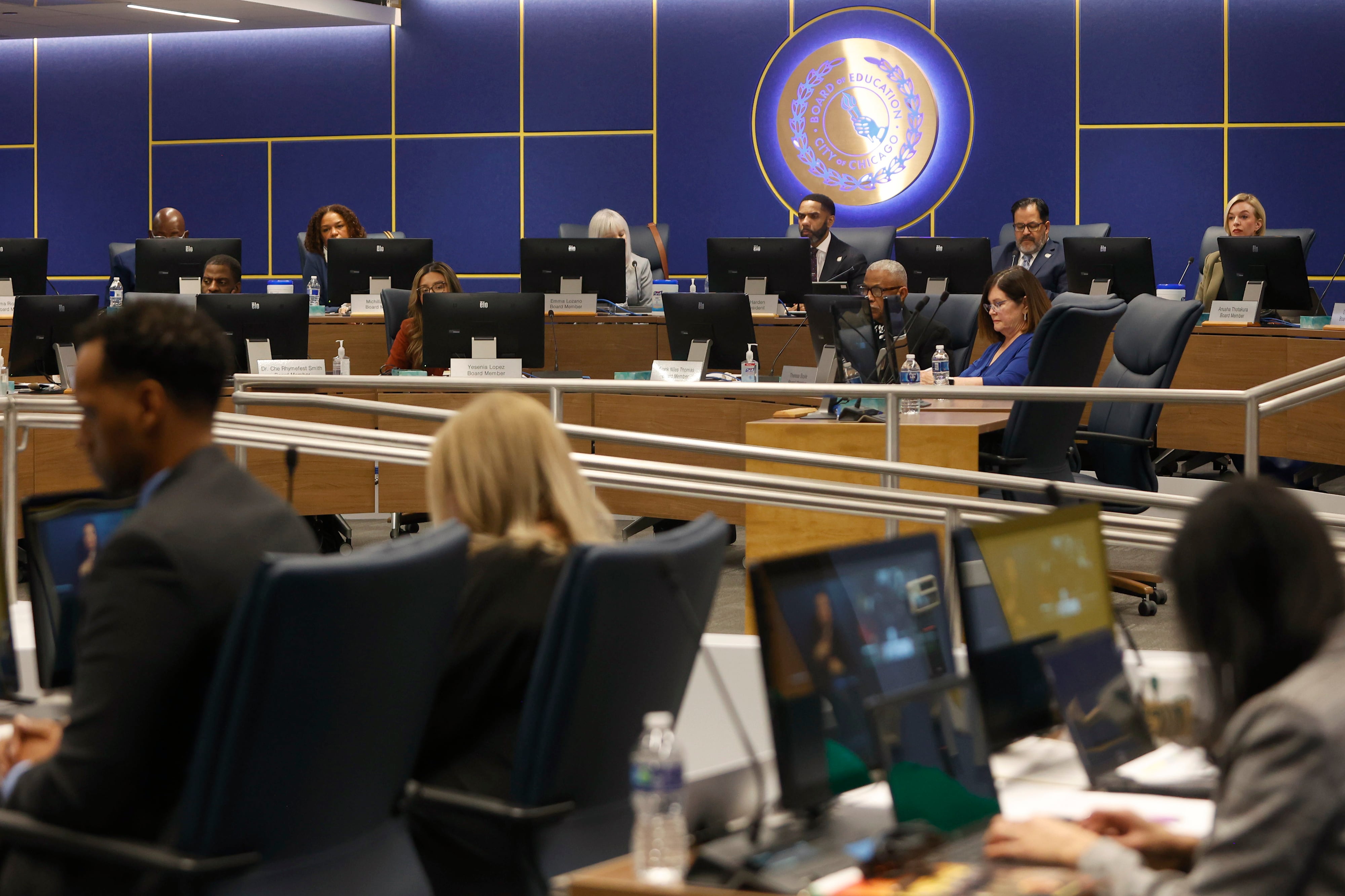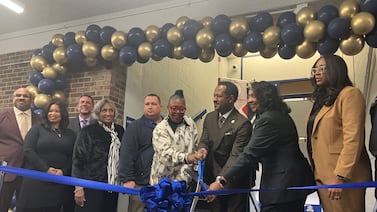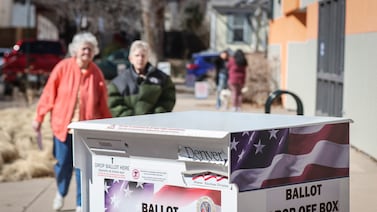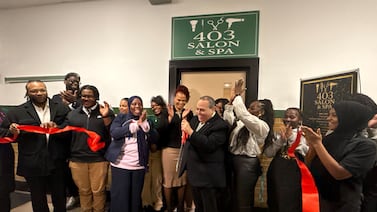Sign up for Chalkbeat Chicago’s free daily newsletter to keep up with the latest news on Chicago Public Schools.
Chicago school board members learned how the Illinois State Board of Education measures and supports schools — with some questioning whether the state’s designation labels impact school reputations.
“You want to make sure your child is in the best hands and if a school is labeled on probation or anything less than great, you don’t want to leave your kid there,” said Michilla Blaise, who was appointed to the school board by Mayor Brandon Johnson to represent District 5.
“I understand that those labels come sometimes with additional assistance and additional resources, but we’ve got to figure out how to do that without signaling to the community that this is a place where your kids aren’t going to get everything that they need,” Blaise said during a special meeting of the Chicago school board Wednesday.
Illinois is poised to change how it measures student and school performance — including changing the scores needed to be deemed proficient on math and reading tests.
In Illinois, schools are given one of five designations based on a variety of data about how well their students do on math and reading tests and how often students miss school. How many students graduate and how many freshmen are passing their classes are factors for high schools. “Exemplary” schools are the top 10% of all schools statewide and “intensive support” schools are those in the bottom 5%.
According to ISBE data, 26 Chicago Public Schools are considered “exemplary” and 39 are designated as needing “intensive support.”
Most CPS schools – 409 of more than 600 schools — are deemed “commendable,” the second-highest category given to roughly 70% schools statewide. CPS has 110 schools in the “targeted support” category, meaning they need to improve on certain metrics, and 36 in the “comprehensive support” category, which means it needs overall improvement.
CPS used to have its own rating system that labeled schools one of five levels: Level 1+, Level 1, Level 2+, Level 2, and Level 3. But the district paused it in 2020 during the COVID pandemic and the labels never returned.
This January, the district rolled out new school dashboards with no levels and no mention of ISBE’s designations.
“The terminology that the state uses is only available on the state report card,” noted Carlos Rivas, the elected school board member for District 3. “It’s not something that we use to advertise our schools.”
Debby Pope, a retired teacher appointed to the school board by Johnson, said no matter what labels are used, “people know what they mean.” She took issue with how much standardized tests still influence how schools are measured and said they are biased.
“I just think that an evaluation system is one thing, but it doesn’t necessarily lead to the kind of school improvement that you and all of us want to see,” Pope said.
The state-mandated training on school improvement for board members primarily focused on how the state supports school improvement efforts for schools in all levels.
Nick Heckel, ISBE supervisor for school district improvement, said his team works with CPS schools on “intensive support” to find ways to improve and address root causes of low performance.
He gave an example of a school dealing with high absenteeism that identified families who were afraid it was unsafe to let their kids walk to school. The principal hired three paraprofessionals to serve as a “walking bus” every day, picking up students at home and walking them to school.
School ratings have changed over time
How to measure student achievement and school performance has changed significantly over the past several decades. In the years after the state gave Chicago’s mayor control over the schools in 1995, more than 100 schools were placed on “academic probation.”
The labeling of low-performing schools became required across the nation after the 2002 reauthorization of the federal Elementary and Secondary Education Act known as No Child Left Behind. That law also required public schools to test students in reading and math in grades 3-8 and once in high school. This continued after the 2015 reauthorization known as the Every Student Succeeds Act, but gave states more flexibility to develop their own accountability systems.
In Chicago, school performance ratings have shaped high-stakes decisions, including closing the lowest-performing campuses and firing all the staff in an effort to reboot.
But in recent years, the state imposed a moratorium on school closures in Chicago, which ended in January. Johnson, a former teacher and union organizer, is against school closures and has criticized high-stakes school accountability policies.
ISBE could soon follow Chicago in changing elements of the state’s school accountability system. Officials are working with more than 100 educators to review state standards and benchmarks and have been on a listening tour to gather feedback on potential changes.
In the wake of the pandemic, several states have lowered testing standards, generating mixed reactions. Some say the adjustments better illustrate improvement and progress, while others fear it could mean students and schools that are struggling could go unnoticed.
The National Assessment of Educational Progress, a federal test that’s given every two years to a sample of students, showed most cohorts of students in 2022 were performing at levels lower than their pre-pandemic peers. The 2024 cohorts were performing more closely to their pre-pandemic counterparts. Illinois state standardized test scores last year showed a stronger rebound in reading, but SAT scores continued to fall.
Data on school performance shapes how families make decisions about where to send their children to school, said Sandra Kwasa, director of training development with the Illinois Association of School Boards. Kwasa, who also gave a presentation to Chicago school board members Wednesday, urged them to get familiar with the state’s report card data for CPS.
“That is what your community sees. That’s what realtors are looking at to sell your community,” Kwasa said. “You really, really want to go look at that and get a good understanding of what that is and what’s missing because it doesn’t tell the whole story, but it tells a part of the story.”
Becky Vevea is the bureau chief for Chalkbeat Chicago. Contact Becky at bvevea@chalkbeat.org.







